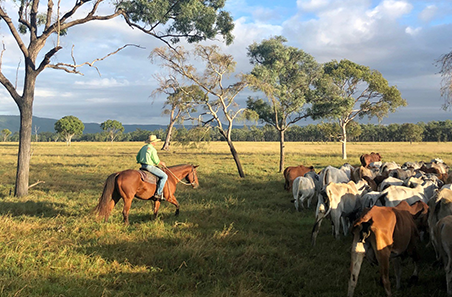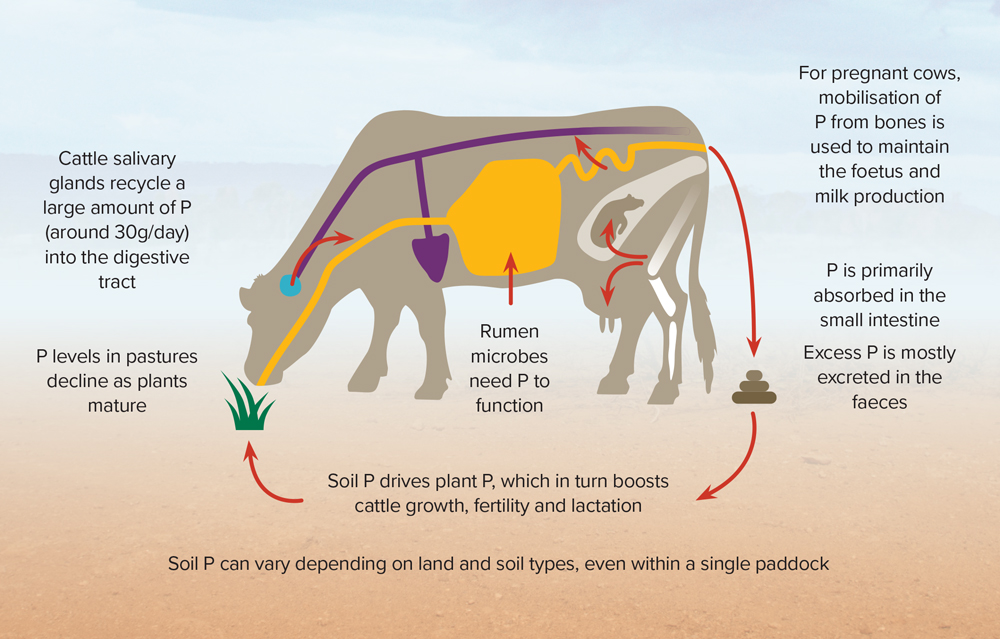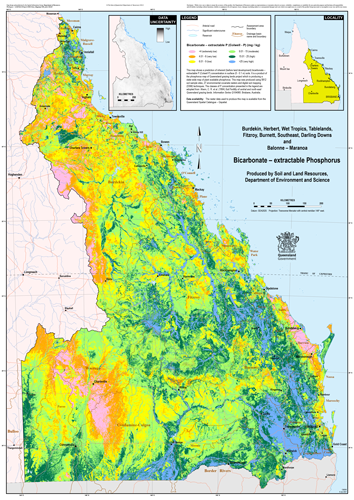
Rob and Ainsley McArthur, Northern Queensland
Strategic phosphorus (P) supplementation has allowed Queensland beef producers Rob and Ainsley McArthur to boost the productivity and profitability of their entire business.
Stay informed with a short, sharp monthly summary of MLA’s latest research reports.
Cattle need phosphorus (P) for almost every vital function of the body. It’s used for:
Deficiencies often arise on north Australian beef properties because most northern soils have lower available soil phosphorus (P) compared with southern Australia. This means there’s often insufficient phosphorus in the pasture to meet animal requirements.
The cattle that have the highest phosphorus requirements are growing stock, late-pregnant heifers and cows, and lactating cows.
On this page:

For many regions in northern Australia, P deficiency is a serious nutritional issue for beef herds and can cause major losses in productivity and profitability.
Research demonstrates that adequate phosphorus intake can:

Cattle producers across northern Australia are seeing the benefits of strategic phosphorus (P) supplementation for a healthy and productive herd.
Read more in these producer case studies:
Strategic phosphorus (P) supplementation has allowed Queensland beef producers Rob and Ainsley McArthur to boost the productivity and profitability of their entire business.
Feeding P not only maximises weight gains over the wet resulting in higher condition scores at calving, it has also helped Russell Lethbridge (pictured) increase breeder profit margins.
Read about the supplementation strategy used by Manager Shane Dunn (pictured) to improve live weight gain, reduce herd mortality and increase weaning rates.
For John and Trisha, phosphorus supplementation has resulted in better health outcomes for breeders and their calves, including reduced lameness and higher weaning rates.
It’s not uncommon for cattle producers to be unaware that a P problem exists in their herd. If stock are gaining weight and body condition is maintained once the wet season has started, there can be a misconception that stock are getting the nutrients they need from only pasture – which isn’t always the case.
Here are some ways to identify a P deficiency:
 Soil plant-available P stocks are a key indicator of cattle productivity. A new high-resolution map shows plant-available P across areas of Queensland.
Soil plant-available P stocks are a key indicator of cattle productivity. A new high-resolution map shows plant-available P across areas of Queensland.
The map has been especially developed for livestock producers to easily identify areas at risk of deficiency and support more targeted and efficient phosphorus supplementation.
Produced by Queensland Government of Environment and Science with support from MLA, this helpful tool and supporting data is readily available online.
Download the Phosphorus map infosheet
Visit the Phosphorus map online
All classes of cattle, whether they be steers, heifers or breeders, will benefit from phosphorus supplementation.
The response of the cattle depends on the severity of deficiency, class of animal and diet quality.
The greatest benefits from supplementation on deficient pastures are achieved over the wet season when grass is green, and stock are gaining weight.
 Learn more through The Toolbox online training: Why do cattle need phosphorus?
Learn more through The Toolbox online training: Why do cattle need phosphorus?



